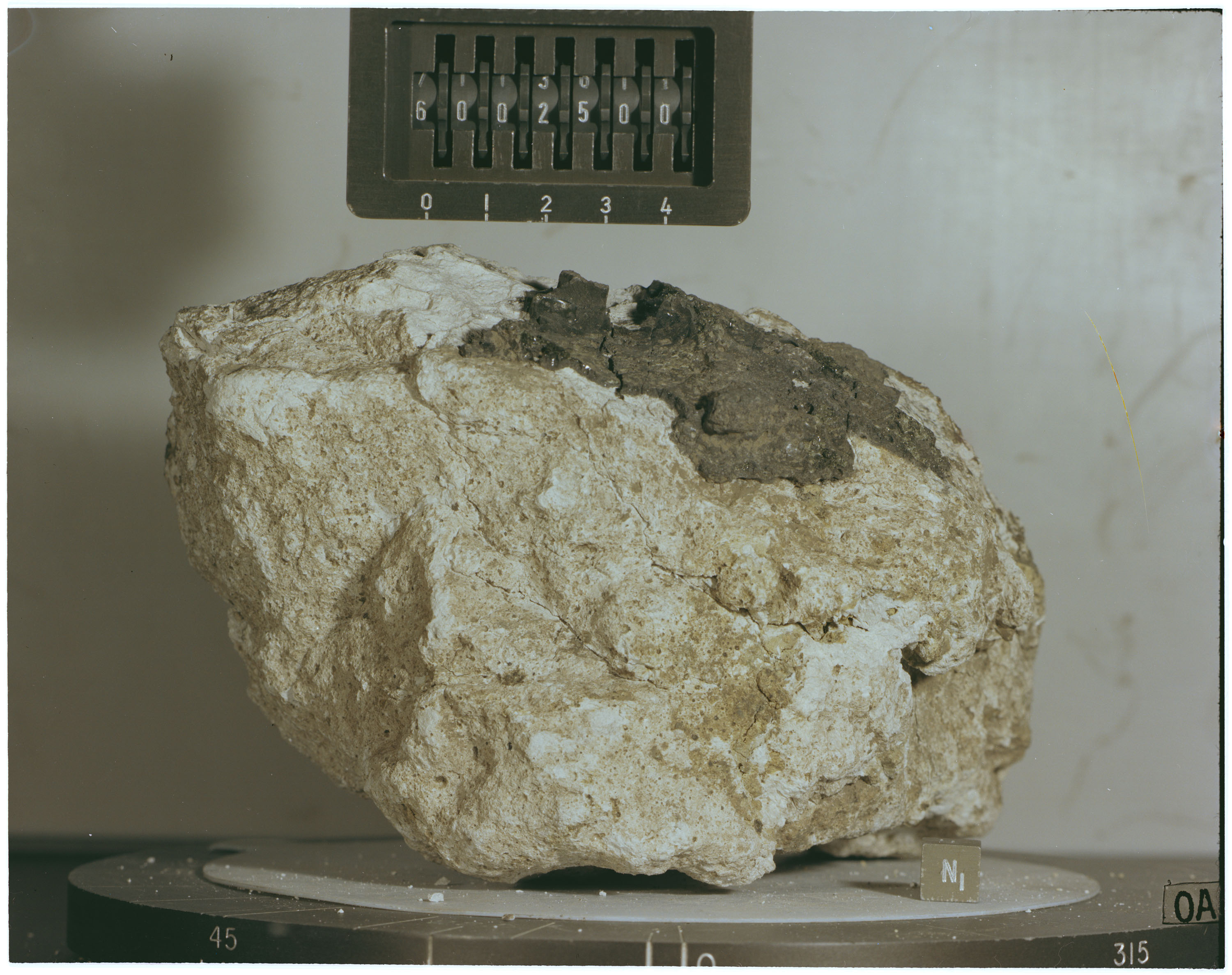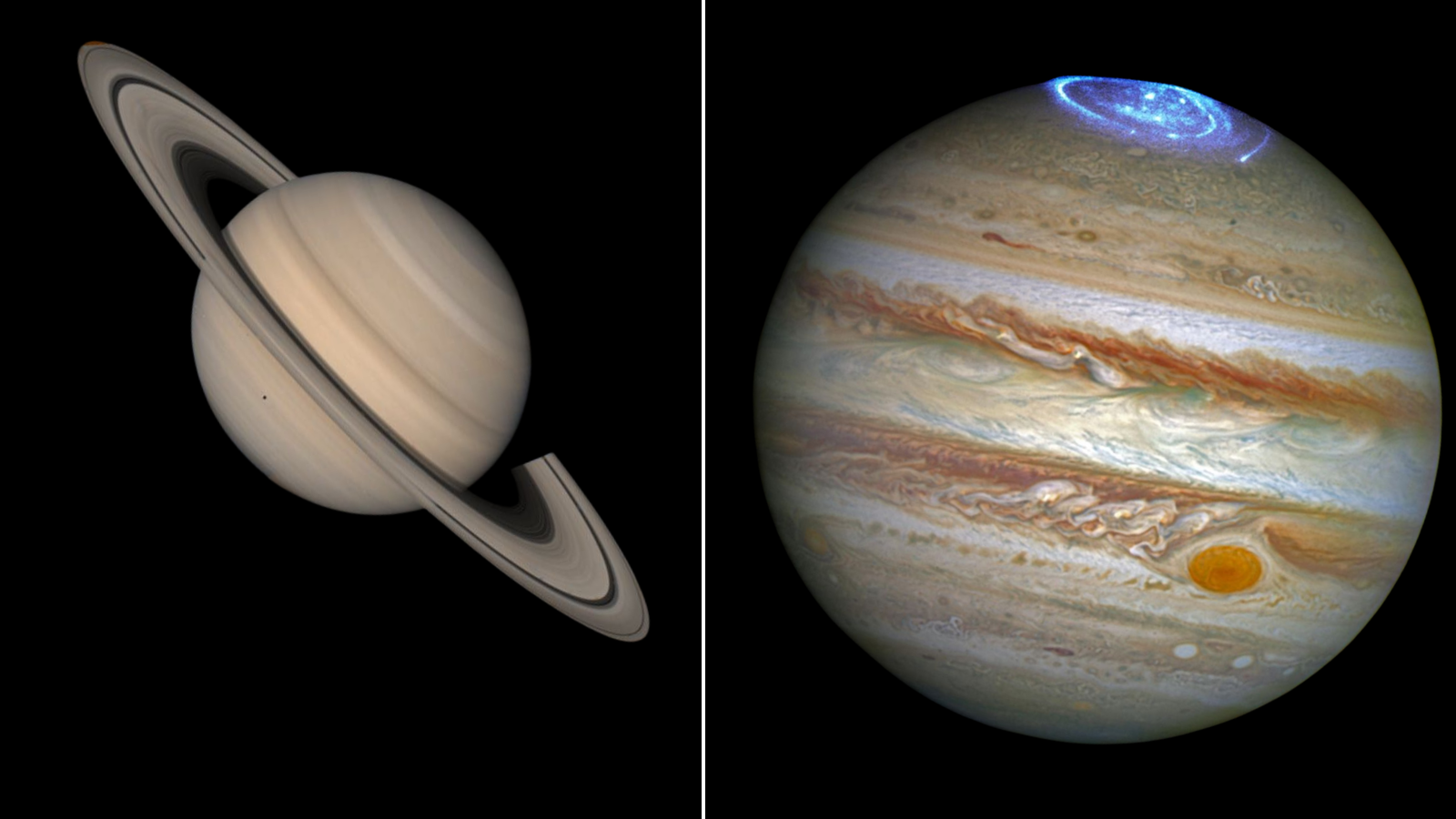The moon once had way more water than we ever imagined, lunar meteorite reveals
"It has been long believed the lunar surface has been dried out for thousands and even millions of years, but maybe there might be more water available than we thought on the surface of the moon, and we just need to find a way to extract it."

New research has revealed that the surface of the moon was rich with water around 4 billion years ago.
The research could be an important step towards better understanding the evolution of the moon and could also help inform future moon missions, including NASA's Artemis 3, which aims to return humans to the lunar surface no sooner than 2026 and leverage frozen water found there for a sustainable presence on the moon.
University of Western Ontario postdoctoral fellow Tara Hayden was investigating a lunar meteorite, which was once a piece of the moon's surface, when she discovered it contained the mineral apatite. This common phosphate allowed for a direct examination of an unknown stage in lunar evolution for the first time when the moon was molten.
The study of the meteorite shows that the crust of the moon contained more water back in ancient lunar history than scientists had previously believed. "The discovery of apatite in the moon's early crust for the first time is incredibly exciting — as we can finally start to piece together this unknown stage of lunar history," Hayden said in a statement. "We find the moon's early crust was richer in water than we expected, and its volatile stable isotopes reveal an even more complex history than we knew before."
Related: Moon rock revelations could solve lingering lunar geology puzzle
Apollo lunar samples didn't paint the full picture of moon water
Hayden explained that the examination of lunar meteorites such as the one she studied to find apatite is important in learning more about the moon and could perhaps reveal insights not found in the samples brought back to Earth in the 1960s and 1970s as part of the Apollo program.
When the Apollo lunar samples were first examined, scientists found they were "volatile-poor." Volatiles are chemicals that easily evaporate at relatively low temperatures; water is moderately volatile, evaporating at 212 degrees Fahrenheit (100 degrees Celsius). This led to the assumption that the moon was "bone dry."
Breaking space news, the latest updates on rocket launches, skywatching events and more!
That assumption was challenged in 2008 when scientists found significant amounts of water and volatiles in glass beads in the Apollo samples, prompting another look at them. As that study proceeded over the last 15 years, other samples such as lunar meteorites that had rained down on Earth after being freed from the moon's surface by asteroid strikes and other impacts have shown the moon has been anything but bone-dry during its history.
"We know most about the history of water on the moon from the Apollo samples, but those samples are thought to only represent about five percent of the entire moon surface," Hayden said. "Until we get more samples back in the upcoming Artemis missions, the only other samples from the surface we have are meteorites."
While studying one of these lunar meteorites during her studies at the Open University in the U.K., Hayden found it held key information about water on the moon that she says is "so vital to our understanding about lunar water-bearing minerals."
Hayden focused primarily on the mineral apatite, which contains volatiles in its mineral structure, finding it within "ferroan anorthosites" in the sample. Ferroan anorthosites are the only known lunar rocks that formed directly from the Lunar Magma Ocean, a slushy sea of molten rock that existed on the surface of the moon 4.5 million to 4.3 million years ago.
Finding this volatile-rich element in the ferroan anorthosite indicates water was present in the moon's mostly molten stages and allowed researchers to study this stage of the moon's evolution directly, the first time this had been done.
"Unraveling the history of water in the earliest-formed lunar crust approximately 4.5 billion years ago is important for improving our understanding of the origin of water in the solar system," Open University professor of planetary science and exploration Mahesh Anand said. "Ancient rock samples from the moon in the form of lunar meteorites provide an excellent opportunity for undertaking such investigations."
Hayden's discovery comes at a crucial time for moon science as humanity gears up to return to the moon for the first time in 50 years via Artemis and as longer lunar stays loom on the horizon.
Frozen water on the lunar surface could be used during future missions not only to sustain astronauts but also to extract hydrogen for fuel that could be used to return teams back to Earth or could be employed for trips deeper into the solar system, such as to Mars.
"It has been long believed the lunar surface has been dried out for thousands and even millions of years, but maybe there might be more water available than we thought on the surface of the moon, and we just need to find a way to extract it," Hayden said.
These new lunar rock revelations are described in a paper published in Nature Astronomy.

Robert Lea is a science journalist in the U.K. whose articles have been published in Physics World, New Scientist, Astronomy Magazine, All About Space, Newsweek and ZME Science. He also writes about science communication for Elsevier and the European Journal of Physics. Rob holds a bachelor of science degree in physics and astronomy from the U.K.’s Open University. Follow him on Twitter @sciencef1rst.

